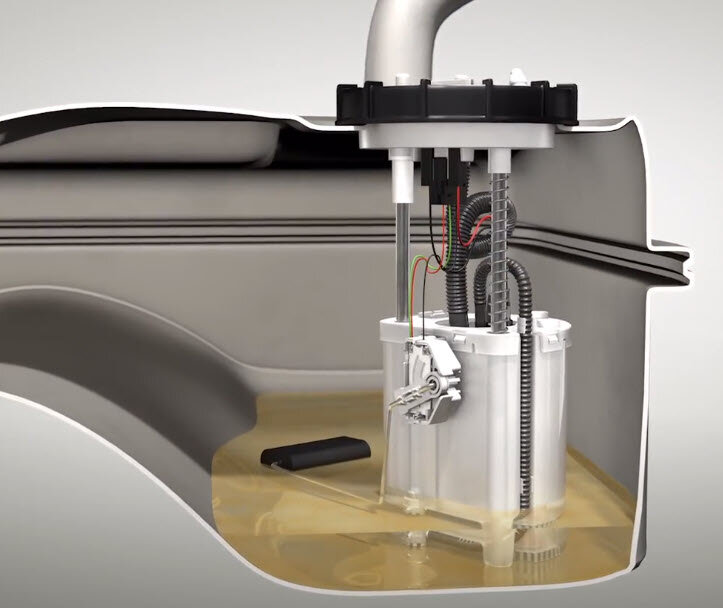
How a fuel delivery module is designed and works
How does a fuel delivery module work? What components is it made up of? What do we mean when we talk about a regulated fuel supply? What is a pulse width modulation signal and what is it used for? This video gives you the answers.
0:20 – 1:45
Fuel delivery modules are located in the fuel tank. They consist of the flange cover, the fuel pump in the reservoir (swirl pot) and other attachments such as the sender unit, filter, non-return valve, supply line to the engine, return side, suction jet pump or pressure regulator.
2:19 – 2:45 Demand-based fuel supply
Control units for fuel pumps are used in both “regulated” and “demand-based” fuel supply systems. They control fuel pumps using a pulse width modulation signal (PWM signal). This means that, in contrast to unregulated fuel supply, only the required amount of fuel is supplied. This reduces the power consumption and saves fuel.
Video - How does a fuel delivery module work? (3D animation)
We need your consent to load the YouTube service!
In order to play YouTube videos, a connection to YouTube must be established. This will also entail data processing and cookie usage by YouTube/Google (possibly also out of the USA). By clicking "Accept", you consent to this data processing and the placing of YouTube cookies on your terminal device. Your selection will be saved for future visits to this website. You may find further information under "More" and in our Data Protection Information.
Product groups
This might also interest you


